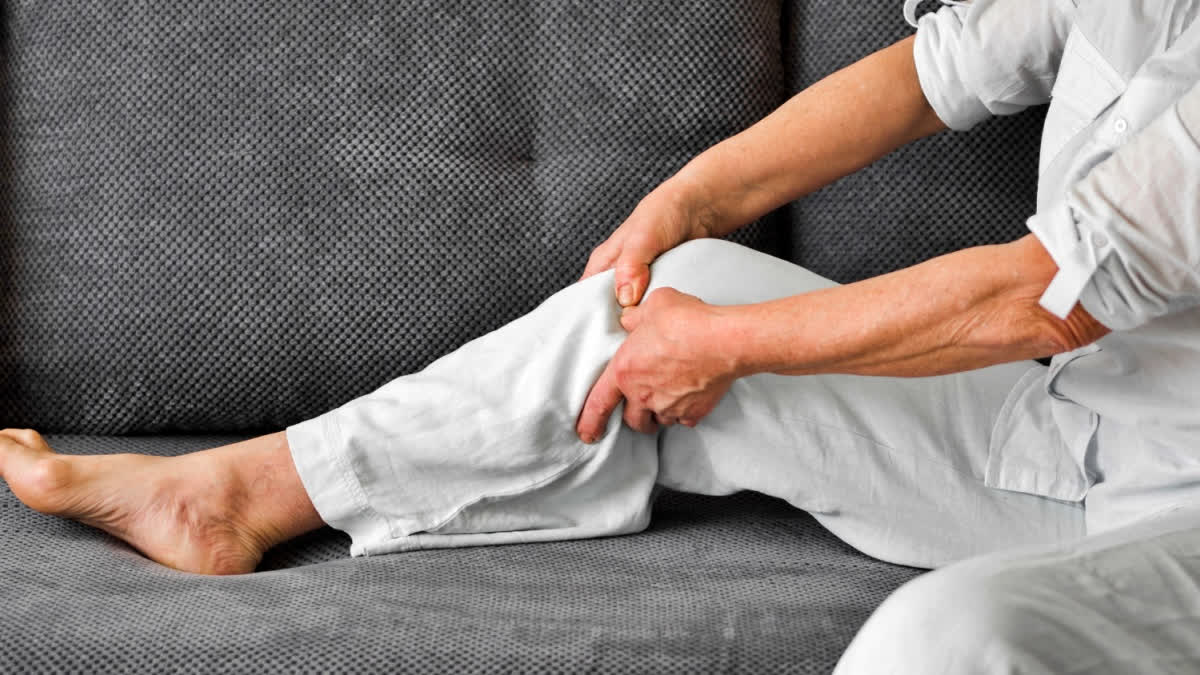Why does winter seem to exacerbate joint pain, and what can be done to alleviate it? “Low temperatures can cause muscles and tendons around joints to tighten, leading to stiffness and discomfort,” says Dr. Alok Pandey, Orthopaedic Surgeon at Apollo Spectra in Mumbai. “This results in pain and swelling in the joints, which many elderly people experience more acutely during the colder months.”
Several key factors contribute to this increase
Osteoarthritis Worsens:For those with osteoarthritis, winter can feel particularly cruel. “The reduced synovial fluid flow in the joints during winter can induce pain,” says Dr. Pandey. Synovial fluid acts as a lubricant for the joints, and its sluggish movement in colder weather exacerbates stiffness and discomfort.
For those with osteoarthritis, winter can feel particularly cruel (Freepik) Reduced Physical Activity:Winter’s shorter days and colder temperatures often lead to reduced activity levels. Staying indoors can weaken muscles and joints. This inactivity can further compound joint pain.
Barometric Pressure Changes:Sudden shifts in barometric pressure (a hallmark of winter weather) can intensify joint pain. “These changes are particularly impactful for the elderly and should not be ignored,” he advises.
How To Manage And Prevent Winter Joint Pain
While winter may seem relentless, there are effective ways to combat its effects on joint health. Dr. Pandey offers several practical strategies for the elderly to maintain mobility and reduce discomfort during the colder months:
1. Keep Moving, Indoors
Daily light exercises or stretches can help keep joints flexible and muscles strong. You could try exercising indoors, as venturing outside in the cold could worsen pain. Engaging in guided yoga, tai chi, or low-impact aerobic exercises can make a significant difference.
Do yoga or low-impact aerobics indoors (Freepik) 2. Stay Warm and Protected
Thermal wear, knee wraps, and warm blankets are essential for preventing cold-induced stiffness and pain. Keeping the joints warm ensures better blood circulation and reduces discomfort.
3. Opt For A Joint-Friendly Diet
Nutrition plays a vital role in supporting joint health. “Anti-inflammatory foods like leafy greens, nuts, and omega-3 fatty acids can be incredibly beneficial,” says Dr. Pandey. Avoiding processed, oily, and junk foods is equally important. Staying hydrated, even in winter, is crucial for maintaining lubrication in the joints.
4. Use Heat Therapy
Warm compresses or heating pads can work wonders for managing pain and improving circulation around the joints. Heat therapy is a simple yet effective way to alleviate discomfort during colder days.
Winter doesn’t have to mean immobility and pain. By staying vigilant and adopting proactive measures, elderly individuals can keep their joints healthy and functional. “The elderly population needs to seek timely treatment to enhance their quality of life and remain active,” Dr. Pandey advises. “By adhering to these vital tips, they can reduce discomfort and improve mobility, ensuring that knee and joint pain don’t stop them from living happily and healthily during winter months.”
Sources:
- https://www.tandfonline.com/doi/full/10.1080/07853890.2023.2196439#abstract
- https://onlinelibrary.wiley.com/doi/10.1155/2020/5763080
Read more:
- What Causes Vitamin D Deficiency That Most Indians Are Struggling With
- 5 Diabetes-Friendly Foods To Keep Your Blood Sugar In Check
- Kannada Actor Shiva Rajkumar, And Other Indian Celebs Who Battled Cancer And Won
